-
Posts
831 -
Joined
-
Last visited
Content Type
Profiles
Forums
Gallery
Events
Posts posted by woodrat
-
-
There's no easy way to make the gun-carriages at this scale except piece by piece.

 this shows the concave cutouts for the sides. Each pair of sides are held together by double sided tape during these steps and drilling.
this shows the concave cutouts for the sides. Each pair of sides are held together by double sided tape during these steps and drilling.
 Drilling for the axles. I do not have the skills to mill the axles so I chose a less accurate method.
Drilling for the axles. I do not have the skills to mill the axles so I chose a less accurate method.

 a jig for aligning the front and back crossmembers during gluing.
a jig for aligning the front and back crossmembers during gluing.


the carriage assembled and pinned

Now for the cannon.
Cheers
Dick
-
I used the good ole Byrnes saw to mill the steps in the guncarriage sides from two strips of 4mm jarrah glued together.
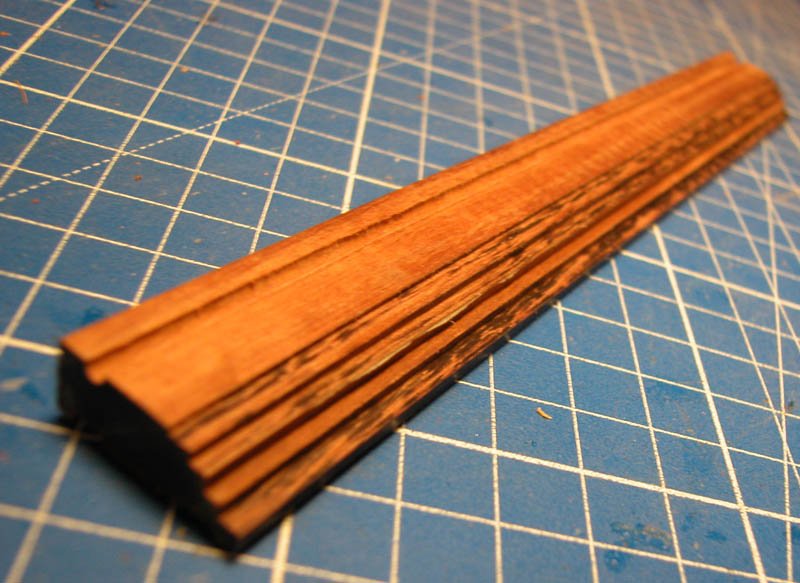

The semi circular slot for the trunnnions was milled using a very small burr mounted in the Dremel router guide. The guns on the gros ventre were only small 4 pounder popguns so the carriages are quite small
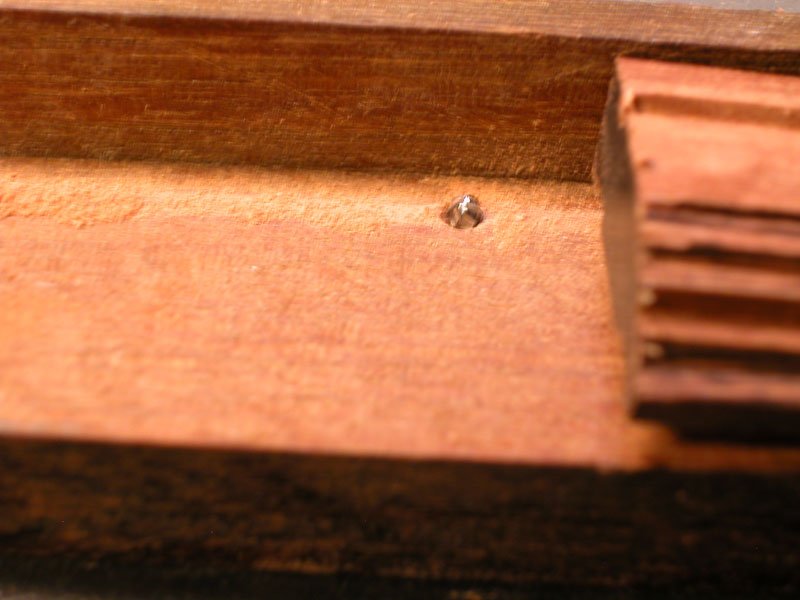
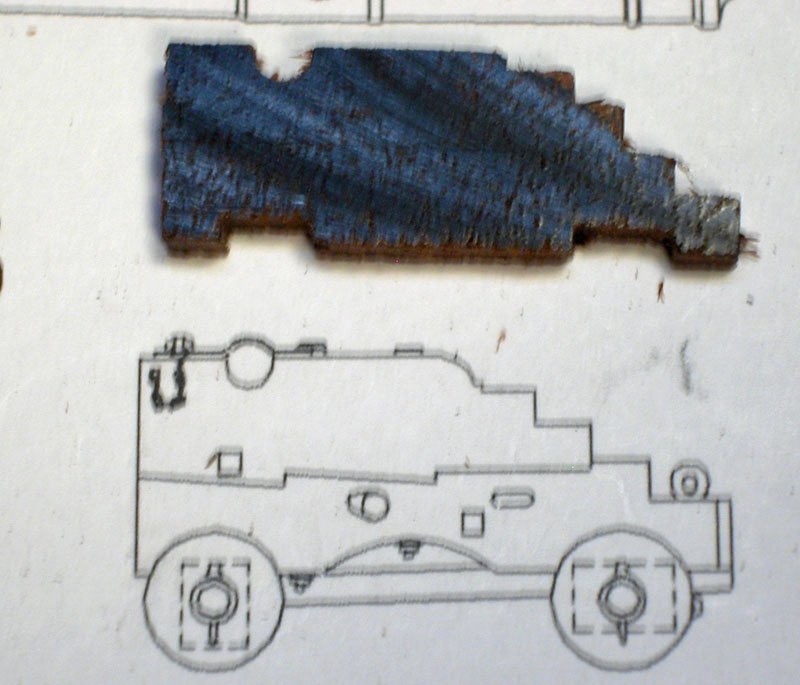
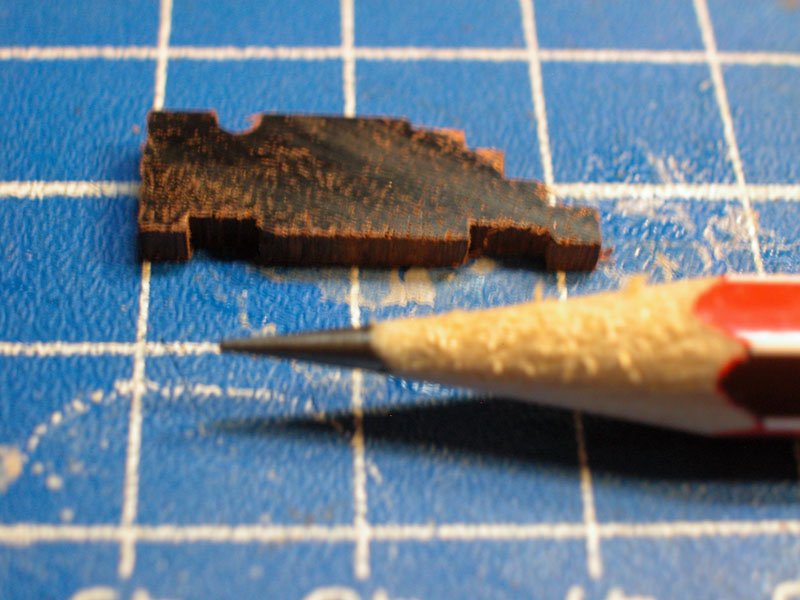
Dick
-
3 hours ago, Louie da fly said:
Beautiful work, Dick. I take it you're leaving some of the deck planking off to show what's underneath?
Steven
Thanks, Steven. I will be leaving off the planking on the starboard side of both decks. I have no plans to cut away any hull frames.
Dick
-
-
On 8/3/2025 at 12:15 AM, Siggi52 said:
if you wont to know more about these ships, you should get it. It's worth the money. I got my copy for 40€ + 13€ taxes and shipping.
I take your point, Siggi, and would dearly love to get the book but, with the exchange rate of the australian dollar and postage costs it is out of the question at the moment. The other volumes of Ships and Boats of the North are similarly unaffordable. Maybe the local library.....
I was unaware of the presence of holes for the tacks. If this is the case, it means firstly that the width of the sail is as Ms Bischoff has calculated and that the norse could sail close-hauled. I am at a loss to explain the appearance of the sails in the rock art except as artistic convention. The graffiti remain very interesting as they were probably drawn by sailors not artists
 .
.
Cheers
Dick
-
21 hours ago, Alvb said:
We know many illustrations that show how the arches merge onto the upper edge of the waist.
I gave a lot of thought to the great arch for my model of Trombetta's 1445 carrack and certainly most of the pictures show the arch forming a sort of gangway above the waist on both sides and not onto the main deck. Certainly it would be a possible route to the forecastle. Running up a wet lapstrake surface cant have been safe so maybe some footholds were nailed into the planks, who knows! As Baker says, there is not a lot of room left in the forecastle for a hatch and ladder and I had no evidence for or against the ladder so I left it out.
I also think that framing of the arch should be strong enough to buttress the forecastle. I hope this helps the discussion.
Cheers
Dick
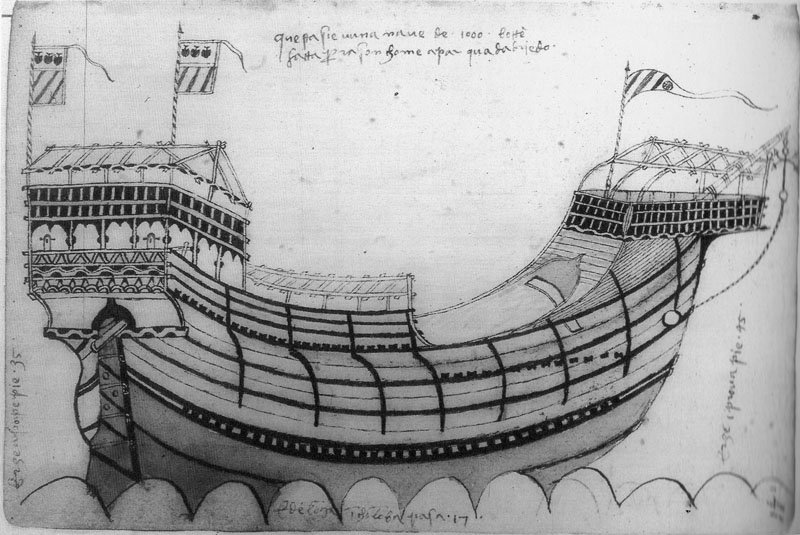
 I
I
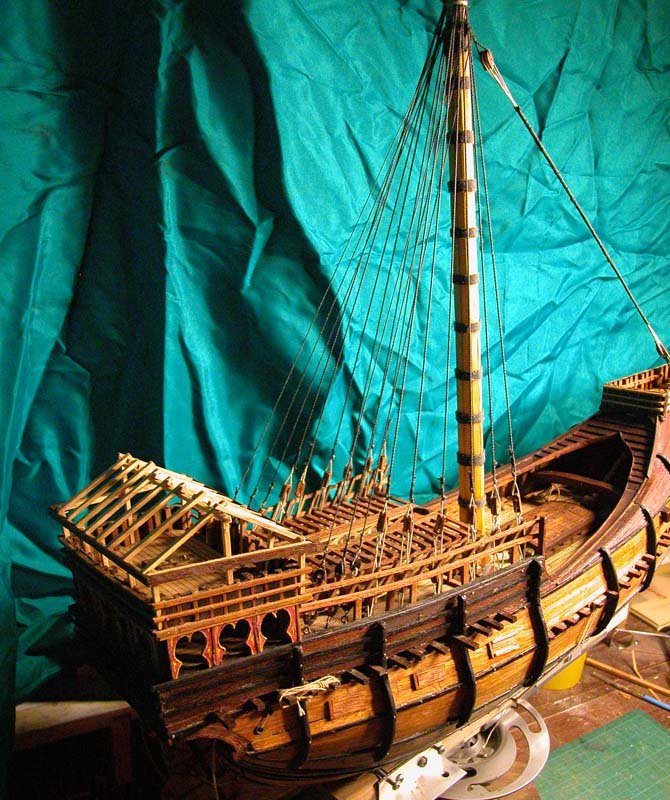
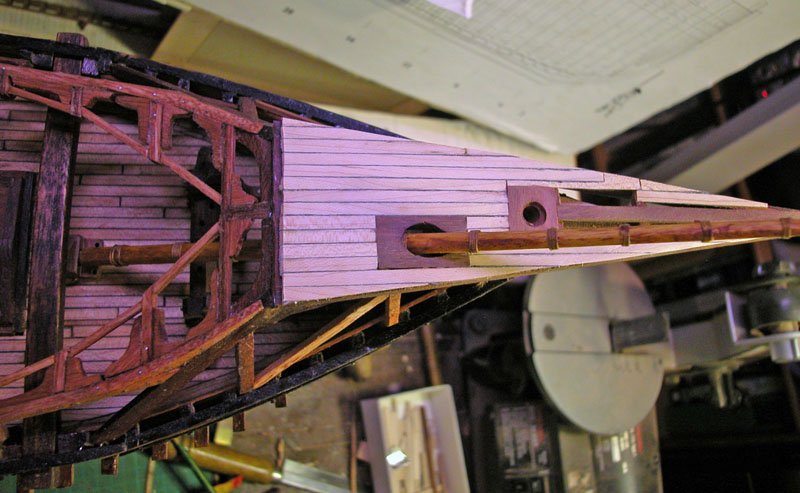
-
2 hours ago, Siggi52 said:
Did you have her Book? It is very interesting to read and she used every source available.
No, you're right, I dont have her book (it's way beyond my budget) and I also make no claim to be an expert on viking ships. That is why I said it was controversial. Ole Kastholm, whose paper I was quoting, is Prehistoric Archaeologist; Senior Researcher and Curator at Roskilde Museum. So that indicates the degree of controversy in the field. I was just trying to help answer Ian Grant's question on reef points. I look forward to seeing the completion of your superb model
Cheers
Dick
-
On 8/1/2025 at 4:21 PM, Siggi52 said:
I'm using what Vibeke Bischoff has reserched with her experimental archaelogy.
It is a very controversial area to dive into. But the results of "experimental archaeology" do not seem to mesh with the iconography so far found dating to the viking period. The sail that ms. Bischoff depicts in her plans seems to be most like those used in 19th century norwegian coasters as seen in this drawing by R C Leslie:
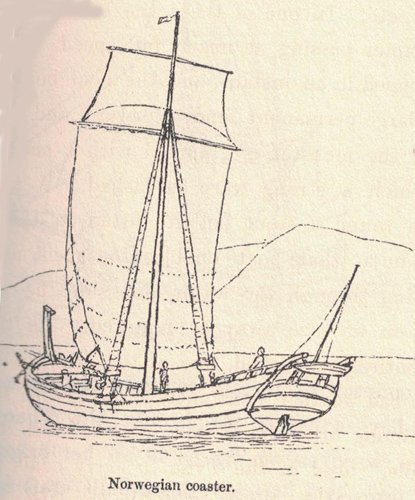
The iconographic evidence from the viking period comes down to only a few sources: rock carvings, coins, rune stones and graffiti.
The Gotland stones aconsistently show a low slung sail which is as wide as the ship is long and with a diagonal pattern on it beneath which are a series of lines attached to the foot of the sail
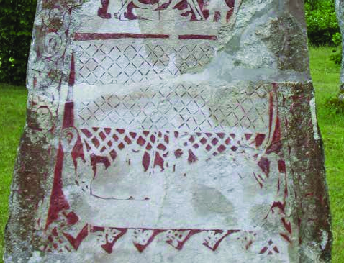
The carvings on rune stones demonstrate very wide rectangular sails
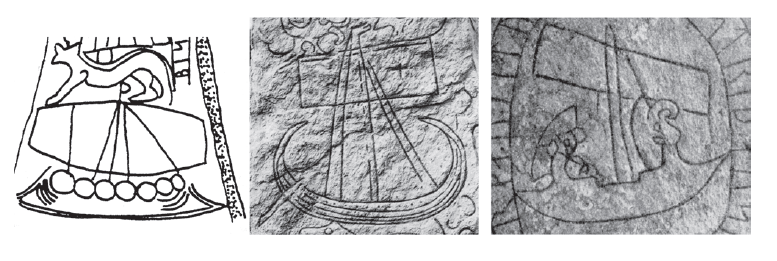
Coins from the same era show again a wide low slung sail with evidence of the sail being brailed up in a number of places but only one coin (the third one) could possibly represent a reefed sail but I doubt it.

The graffiti scratched on rocks in Trondheim show a longship and a ?knarr with lowered yards and the sail furled.

The modern reconstructions of sail and rig are more in keeping with the well tested and effective 19th century sail of the coaster which is high and narrow rather than the meagre evidence from the viking period of a wide and low slung sail. We dont have enough evidence to be dogmatic about this and, at the end of the day, Siggi you have built a beautiful model of a modern reconstruction of the Gokstad ship and it is perfectly fine to attach a reconstructed sail on it. The above is not meant as any criticism of your lovely build.
Cheers
Dick
ref. The rigging of the viking age warship. Ole Thirup Kastholm
- Ian_Grant, Baker and Keith Black
-
 3
3
-
The after deck has now most of its furniture and fitting. I will install a hen-coop although its not on the plans. I cant imagine the french travelling halfway round the world without a source of eggs for their soufflés 👨🍳🇫🇷. They also had a bread oven which I am thinking about Having wasted a mort of time trying to resin mold guns and carriages, I will go back to good old-fashioned wood for the carriage and will try Woods Metal for casting the guns which will only be seen on the port side of course.
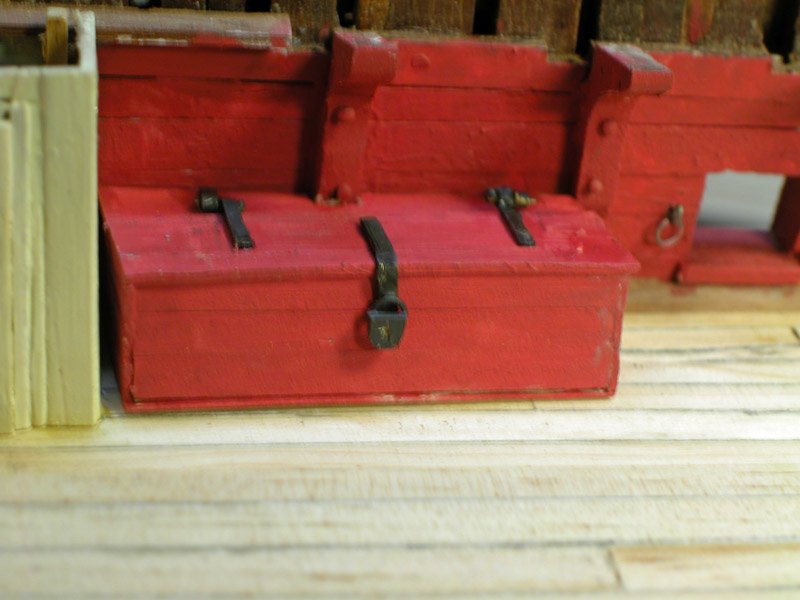 an arms locker on the main deck
an arms locker on the main deck
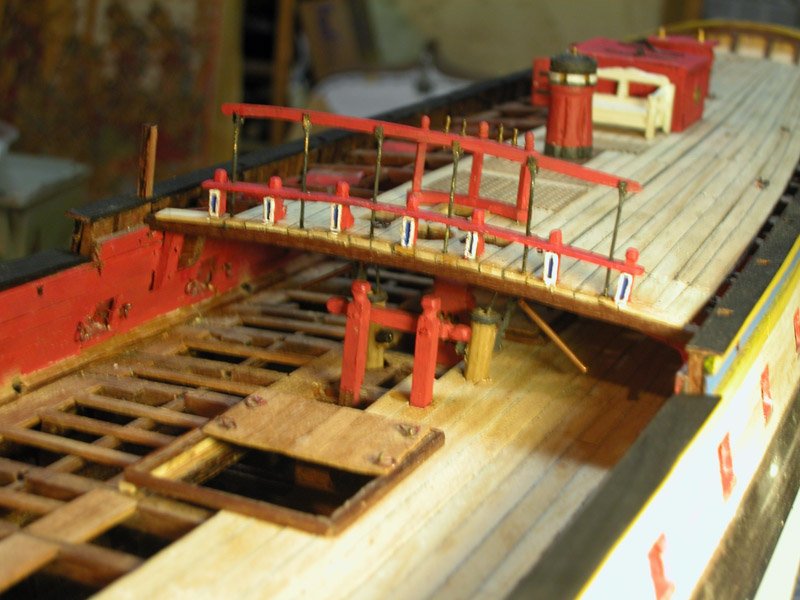
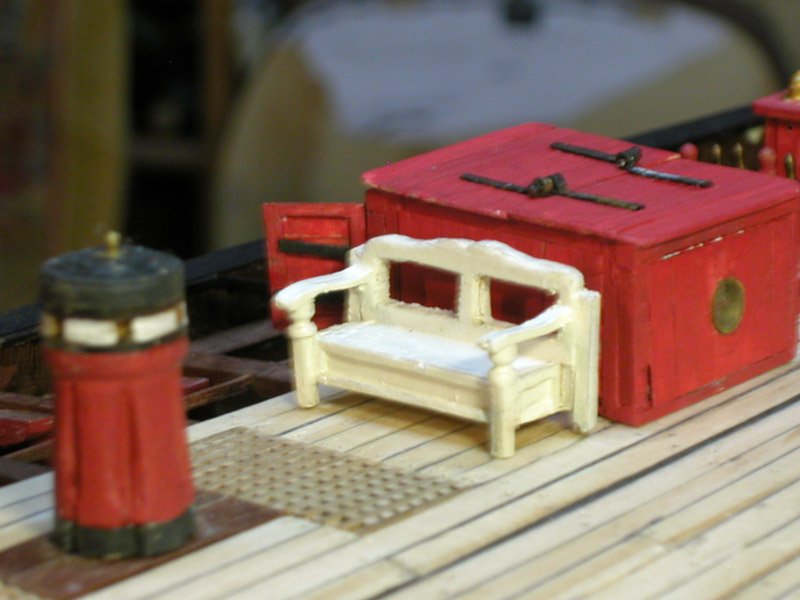
Cheers
Dick
- yvesvidal, JacquesCousteau, davyboy and 4 others
-
 7
7
-
G'day Grant. Yes, fully retired and able to spend more time in the shed. Where size permits, I like things to open and close (within reason), Very neat work on the Harriet McGregor I see. I have made a callout for interest in a Perth Static modellers club on MSW . But no bites as yet. The bricks were painted molded resin, orange ochre with dry brushed charcoal.
Cheers
Dick
- CiscoH and Louie da fly
-
 2
2
-
Thanks, Rik. As Arnie said, I'm bark!
I have made quite a lot of the deck furniture:
The belfry:
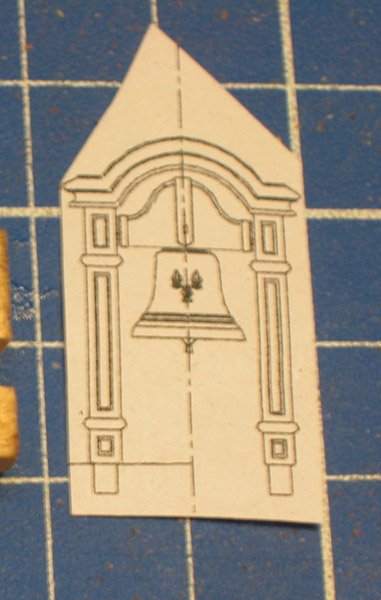
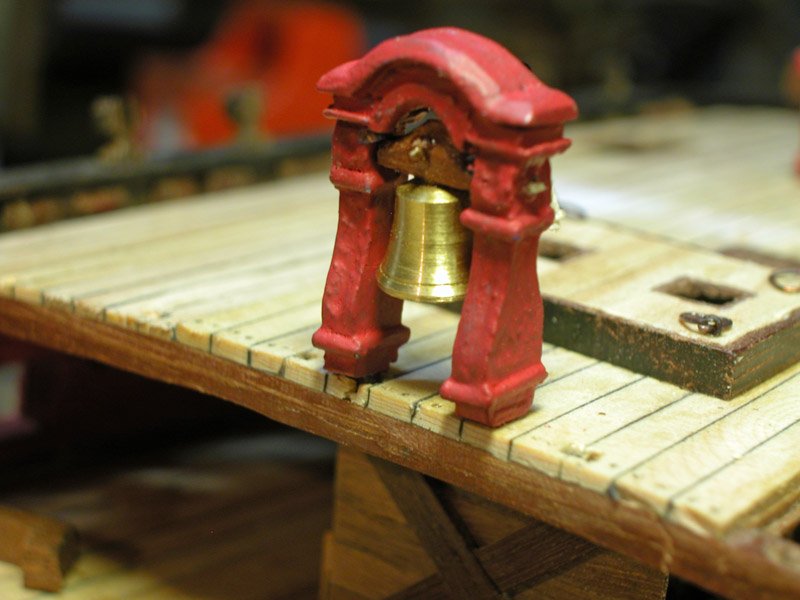
The companionway:
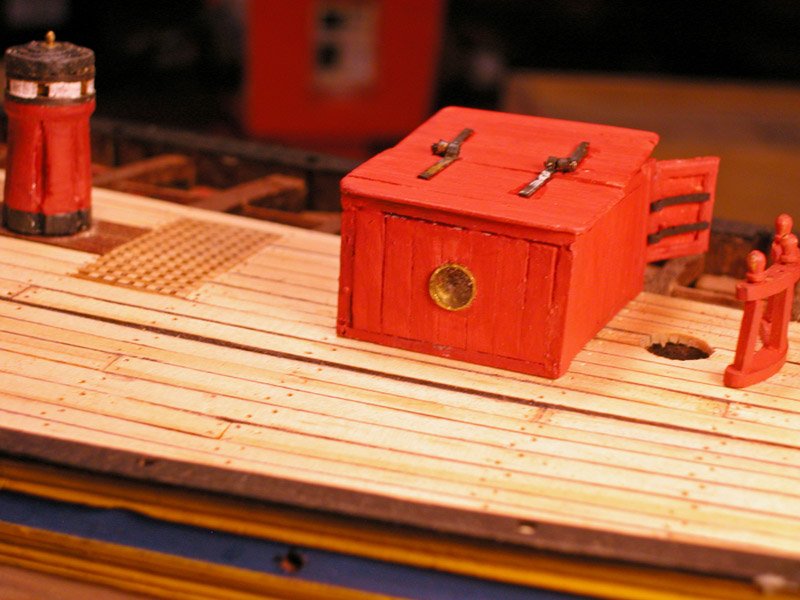
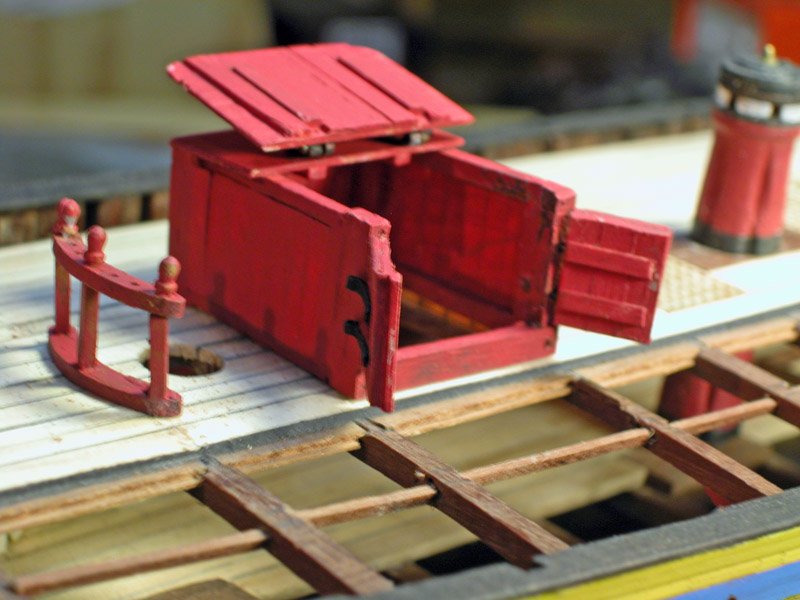
and the binnacle, different to that shown on the plans.
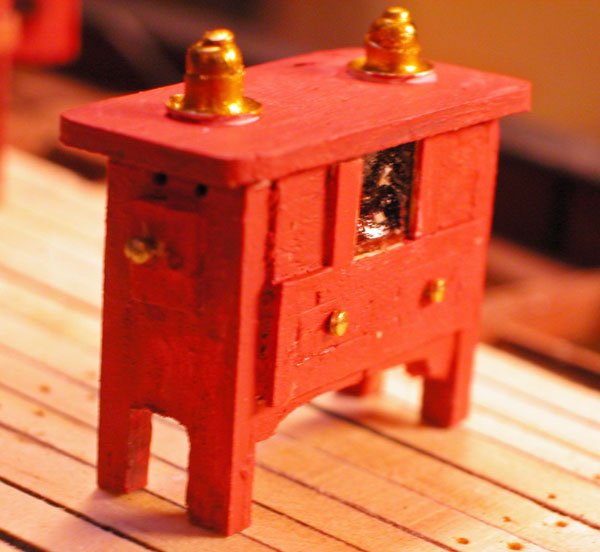
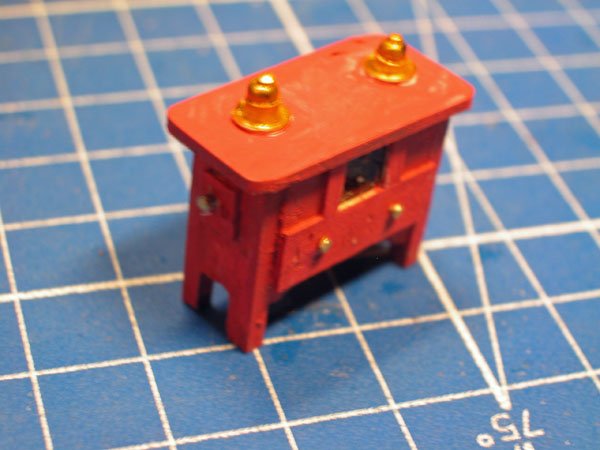
Also done are the pinrails for the three masts, all very fiddly. It's a bit like a doll's house.
More furniture to come.
Cheers
Dick
- yvesvidal, scrubbyj427, BradNSW and 4 others
-
 7
7
-
-
-
Thanks, Steven. This tends to confirm that there was some sort of deck in these vessels, they were shallow draft and were indeed sailed.
Dick
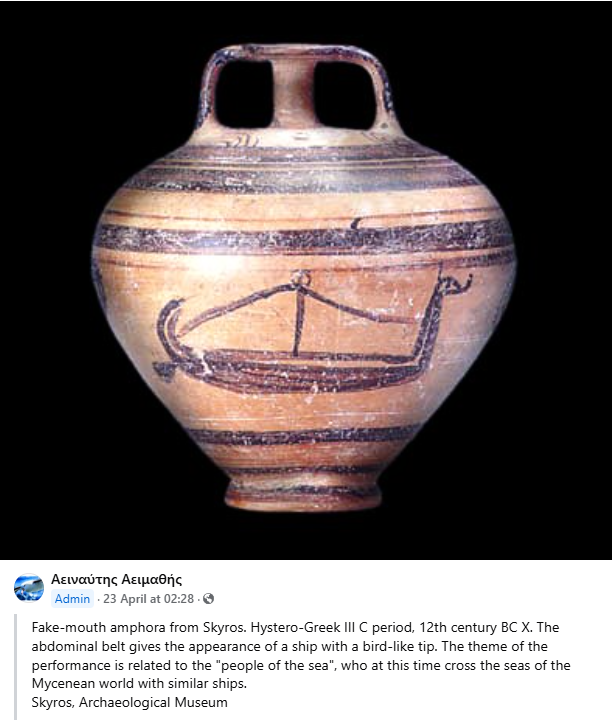
- Louie da fly, GrandpaPhil, J11 and 1 other
-
 4
4
-
On 4/23/2025 at 12:36 AM, Siggi52 said:
with the rocker in the keel you will have no trouble with hogging. That is statics.
You may well be right but I will be able to test this . Certainly the Hjortspring vessel had hogging issues and the Nydam, being pre-viking also may have had them. But the later viking vessels may have overcome this problem.
Dick
PS I will have to put this project on hold while I finish the Gros Ventre
-
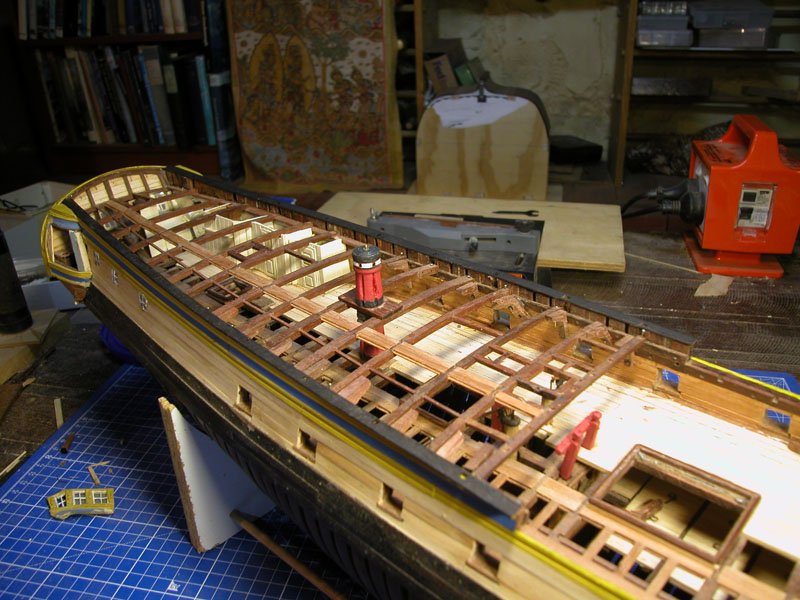
The after deck framing
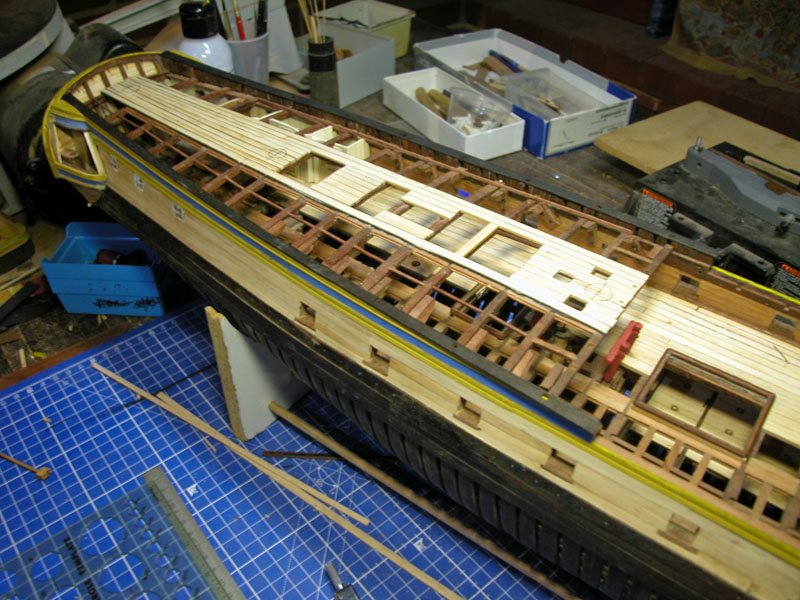
The central thicker deck planking in place
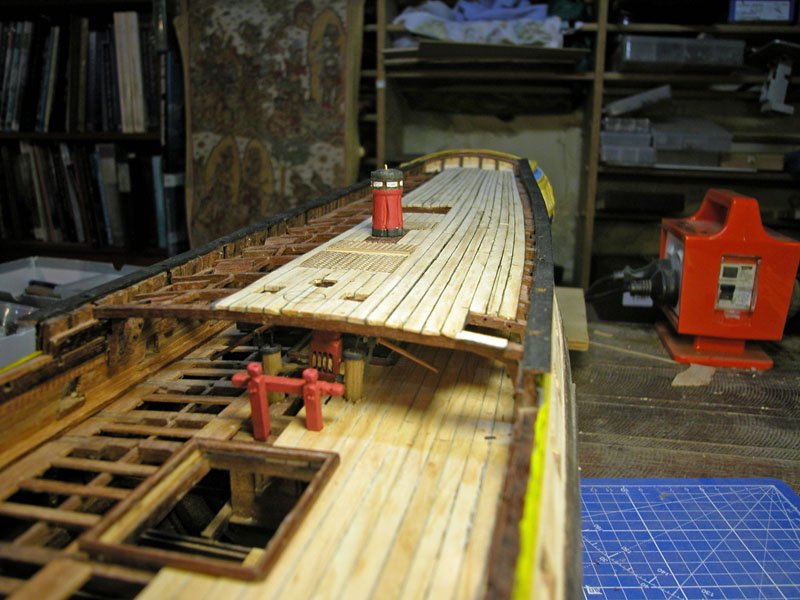
The outer thinner deck planking in place. Gratings in place.The waterway will be added when the deck is finally attached
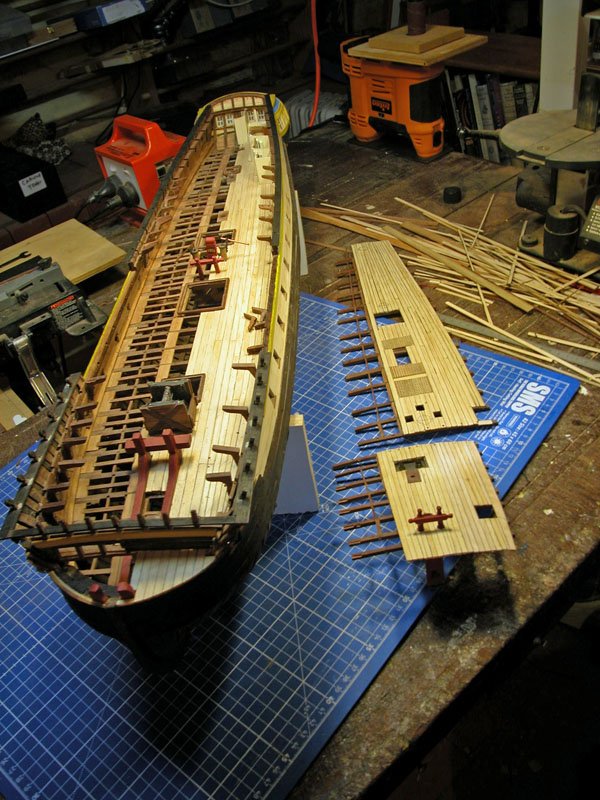
The two upper decks are removable which allows completion of the main deck and facilitates finishing off the upper deck furniture etc
Cheers
Dick
-
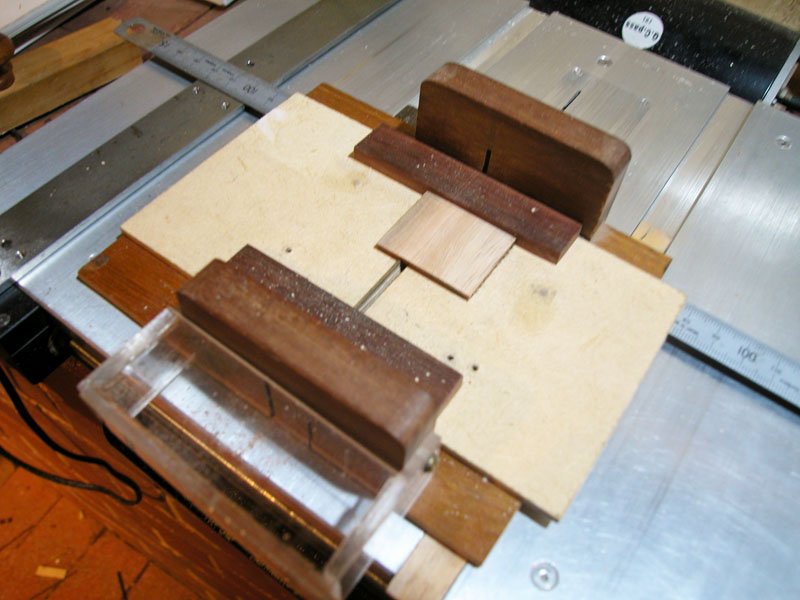
This shows the attachment to my cross-sled for making the gratings. The slats are to be the thickness of the saw blade(1mm.). A 1mm. thick brass strip is glued to the slot to allow a spacing of 1mm.
This allows slots to be cut in a block slightly deeper than the planned grating
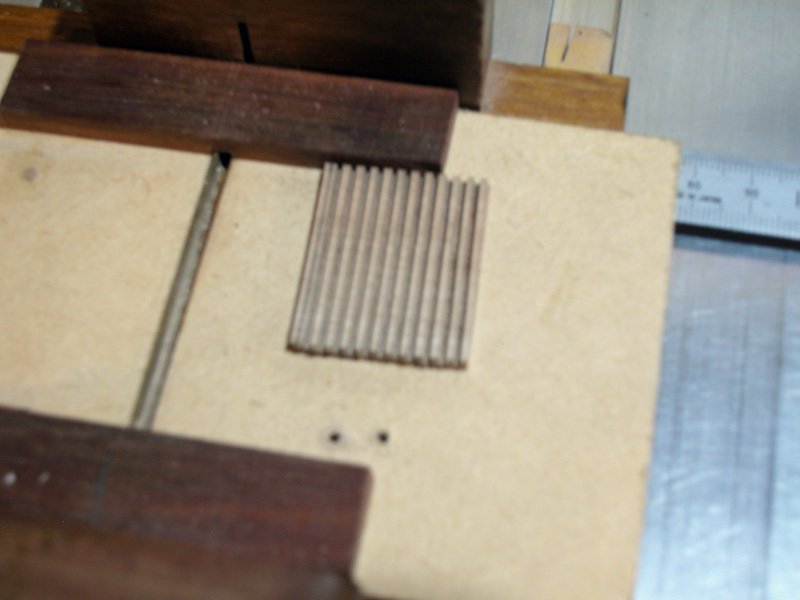
The grating is turned through 90 degrees and shallower cuts are made for the upper slats
The 1mm. thick upper slats are glued in place . They are deeper than required and the excess will be sanded off later.
double sided tape (wondeful stuff!) is glued to a block of wood and the grating stuck face down .
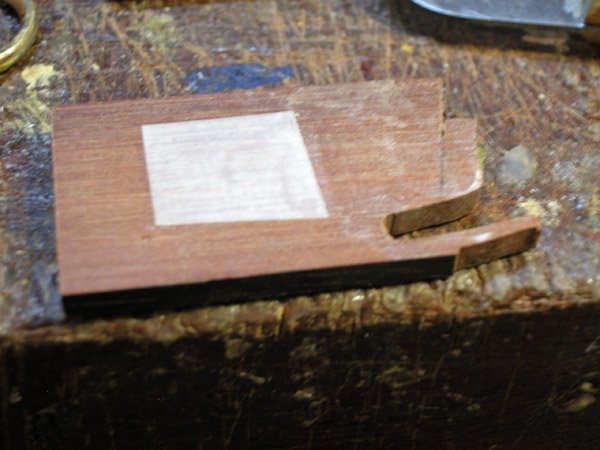
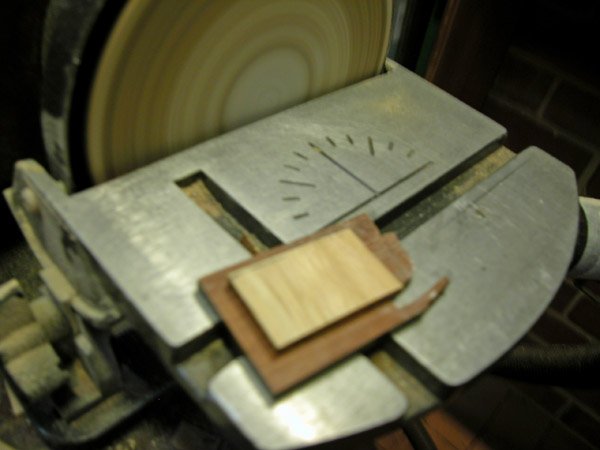
The excess depth is sanded off. (But Use a thicker block of wood than I did to avoid burnt finger tips). This exposes the lower slats.
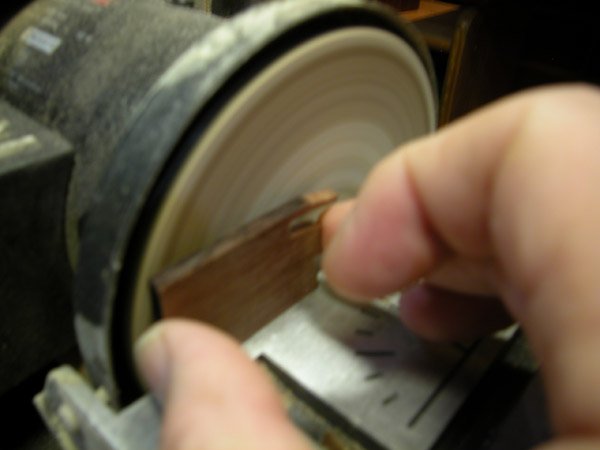
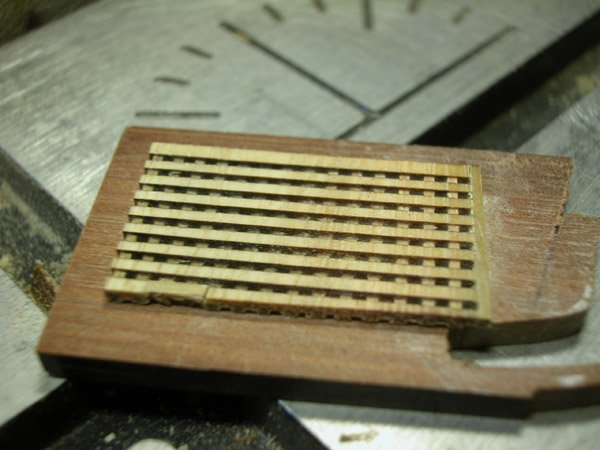
TThe grating is detached from the tape, turned over and the excess of the upper slats sanded off
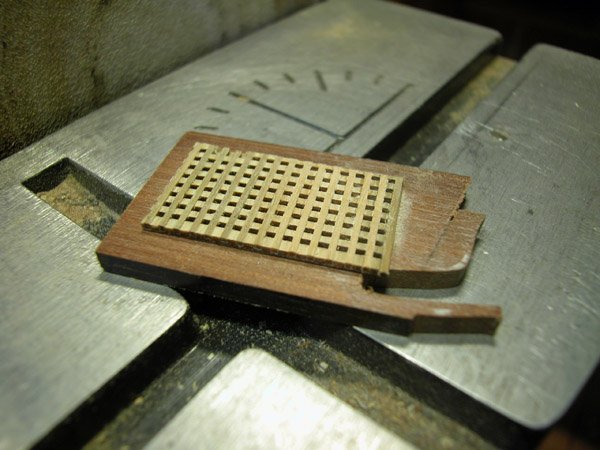
the grating just needs trimming to size now
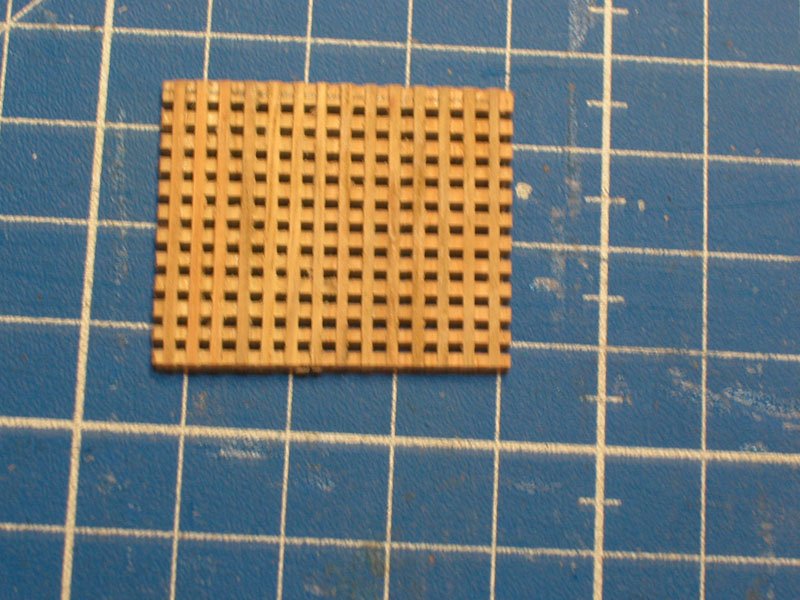
Cheers. I apologise for teaching you to suck eggs but I have seen some awful gratings in my time. Usually with way over size holes that a sailor's foot would fall through.
Dick
- scrubbyj427, KARAVOKIRIS, BradNSW and 7 others
-
 9
9
-
 1
1
-
On 4/20/2025 at 6:35 PM, AnobiumPunctatum said:
In your scale you can build the model with all the fine details
Thanks Christian. I have not seen the vessel and may never do so but it is not only interesting, as you say, but an important precursor of the later viking clinker-built sailing vessels. The large scale will allow me to test the efficacy of the anti hogging mechanism.
Tschüss
Dick
-
The forecastle deck. The framing is planned to be visible on the starboard side but planked on the port side. the central planking is thicker than the outer decke planking. The forecastle deck remains removable until all work on the main deck is complete.
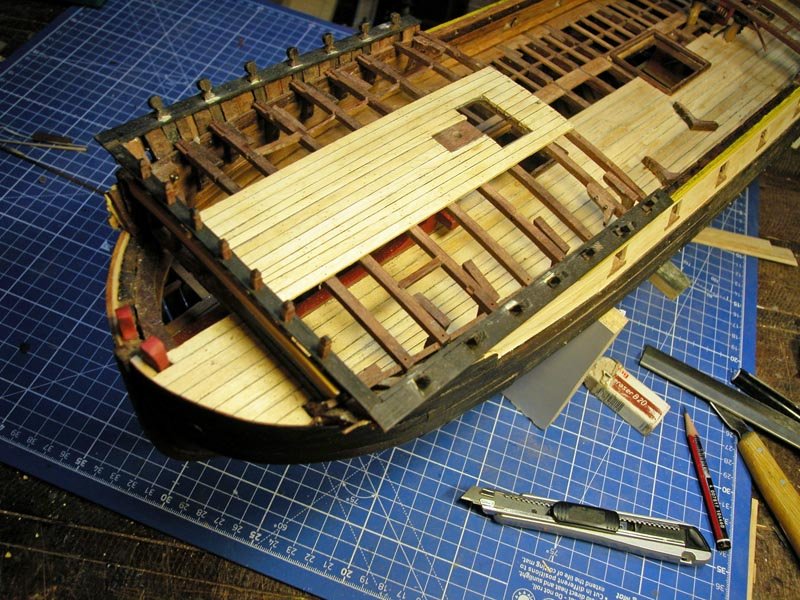 central thicker planking
central thicker planking
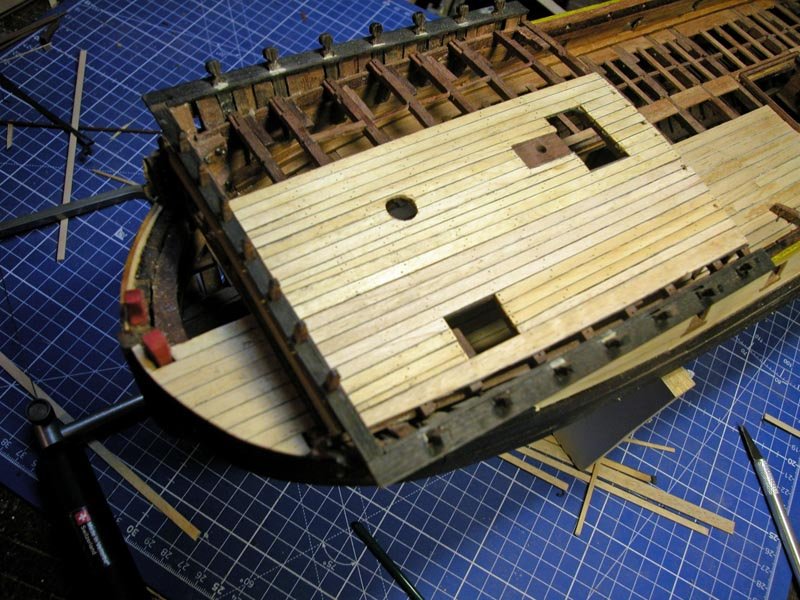 outer planking awaiting waterways
outer planking awaiting waterways
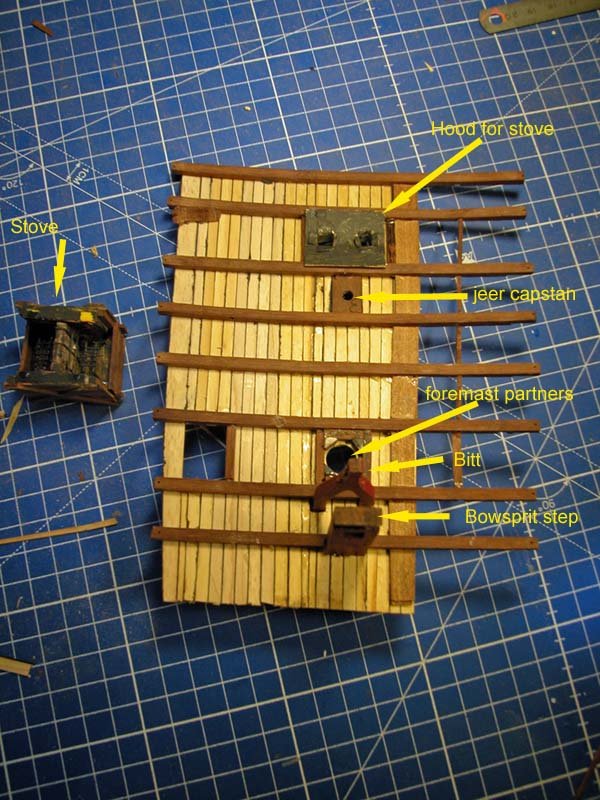
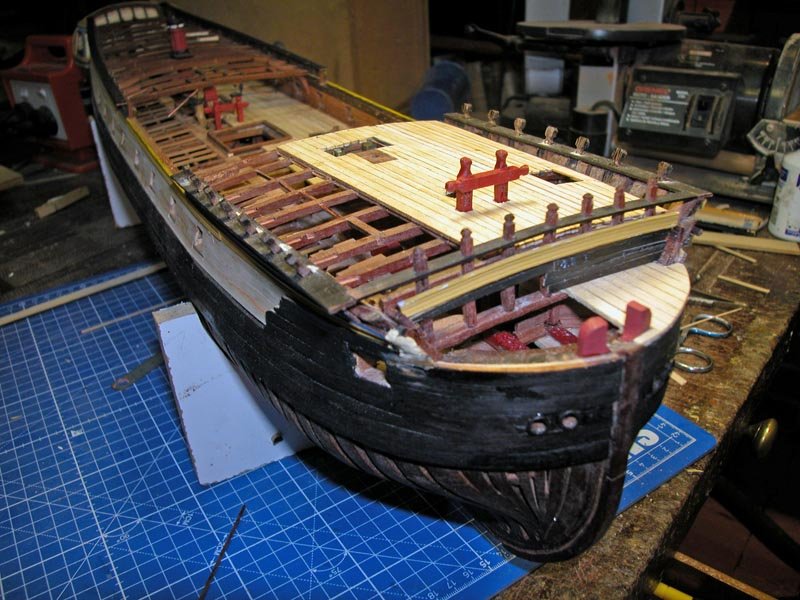
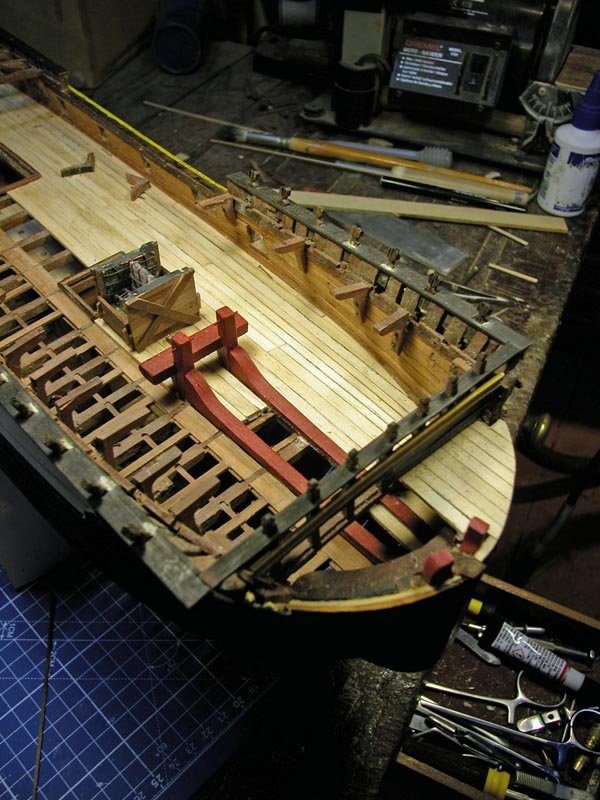 forecastle deck removed
forecastle deck removed
Cheers
Dick
- KARAVOKIRIS, scrubbyj427, Archi and 6 others
-
 9
9
-
Sheer plank largely finished and some of the framing of the quarterdeck. Now I have to do some painting. Deck furniture will red ochre as may be the inside planking.
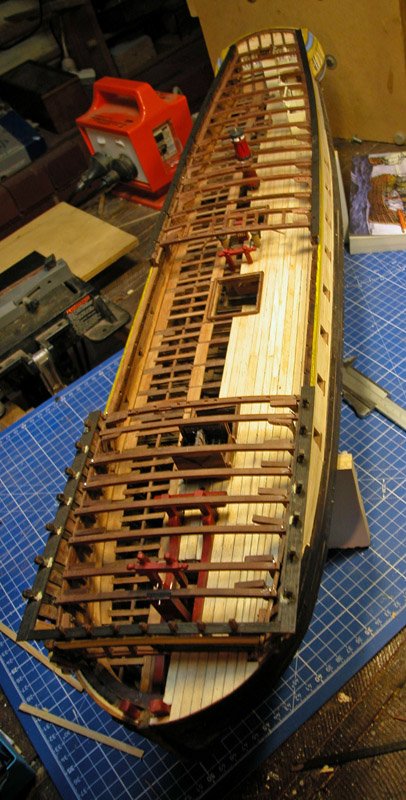
Cheers
Dick
- KentM, KARAVOKIRIS, JacquesCousteau and 5 others
-
 8
8
-
I have roughed out the keel plank as well as the stem and stern posts out of lacy she-oak.
The shaping of these members will be the most difficult part of the build because of the complex 3-D shape. I will endeavour to include some rocker to the keel plank.
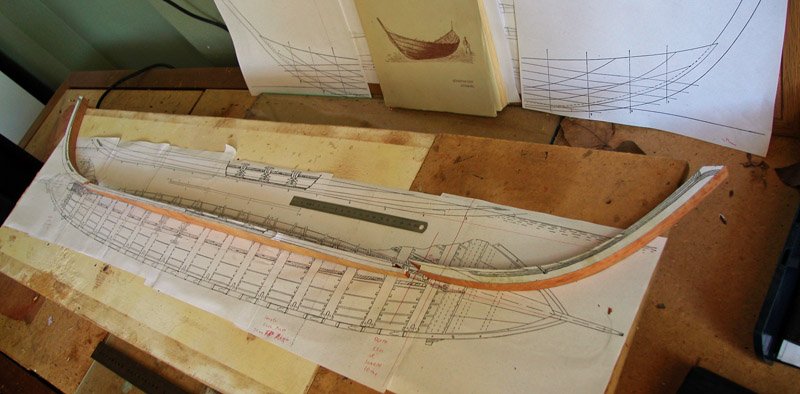
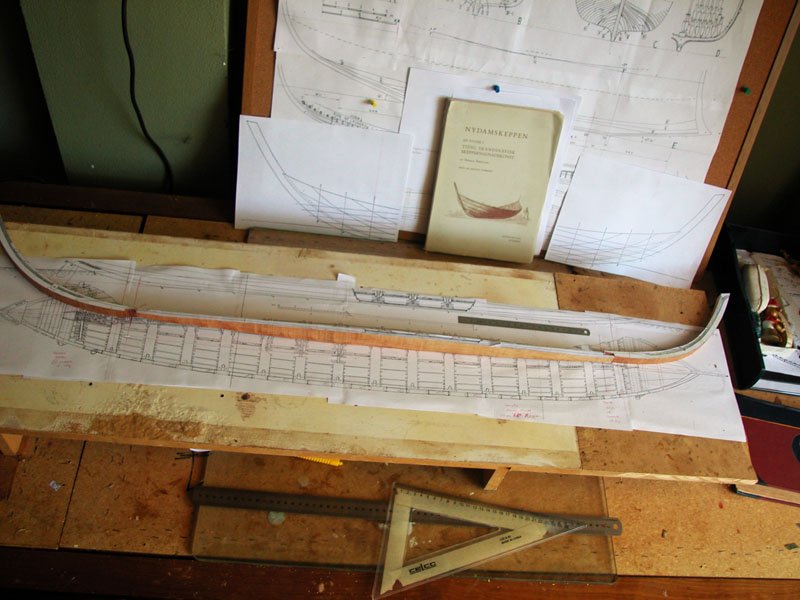
Cheers
Dick
- Siggi52, Kenchington, thibaultron and 7 others
-
 10
10
-
The beakhead bulkhead finished, as well as the shear plank for the forecastle. Note the cutout for the bowsprit


Dick
- JacquesCousteau, Stavanger, ccoyle and 4 others
-
 7
7
-
You're entirely welcome, Bill. Here is the forepart of the ship prior to insertion of beakhead bulkhead
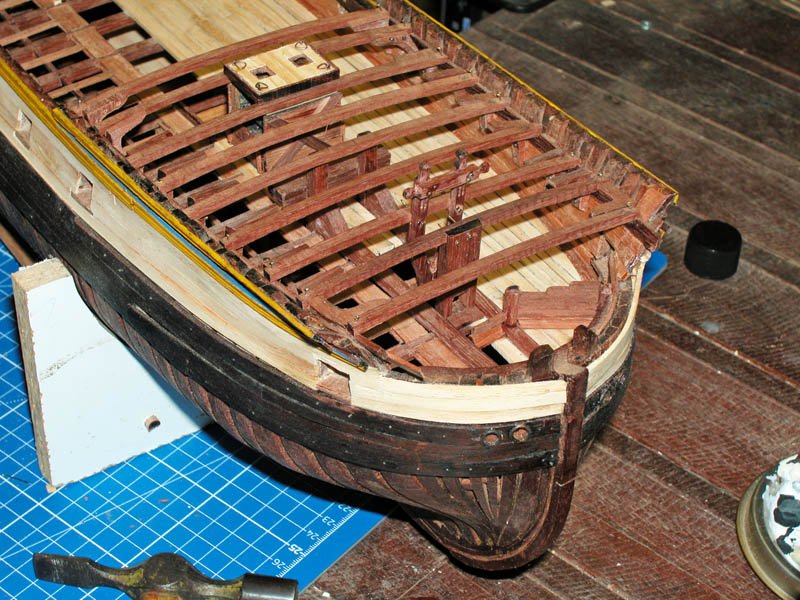
The beakhead bulkhead is framed and the stanchions with holes for sheaves applied. The extra planking for the anchor lining extends to the stempost according to plans which brings it up to the thickness of the main wale.
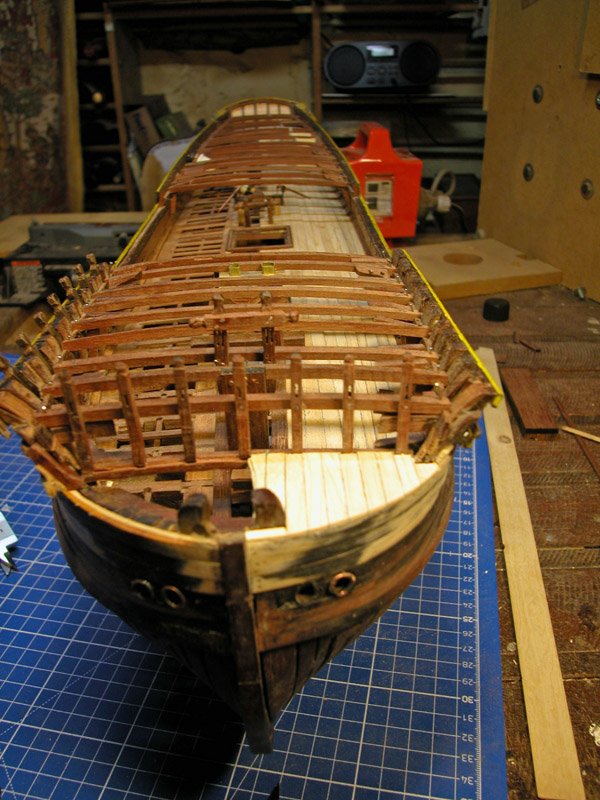
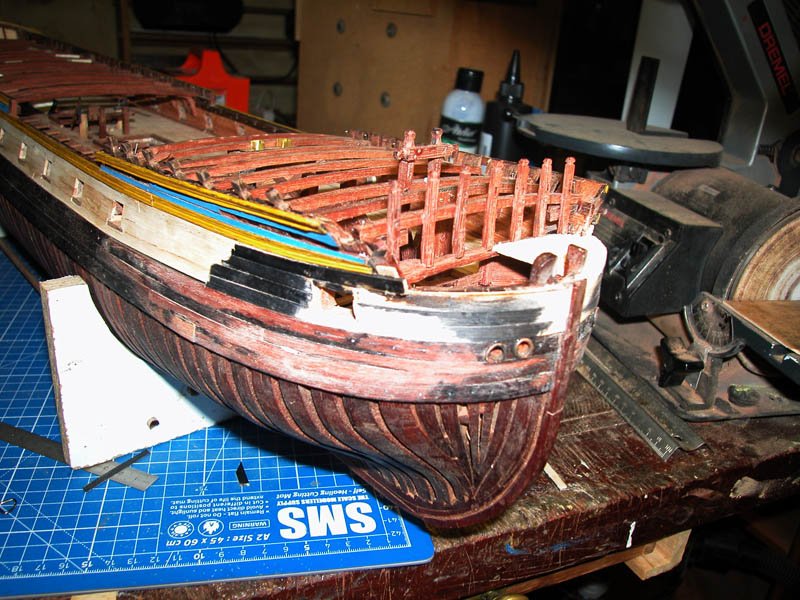
Cheers
Dick
- davyboy, yvesvidal, JacquesCousteau and 1 other
-
 4
4
-
Thanks Siggi52 for the info and useful discussion by private message. He suggested that acquiring and using the most recent plans made by the National Museum in Copenhagen may produce a more upto date model. A recent replica was made from these plans. An excellent model would be made from these plans were they available from the museum.
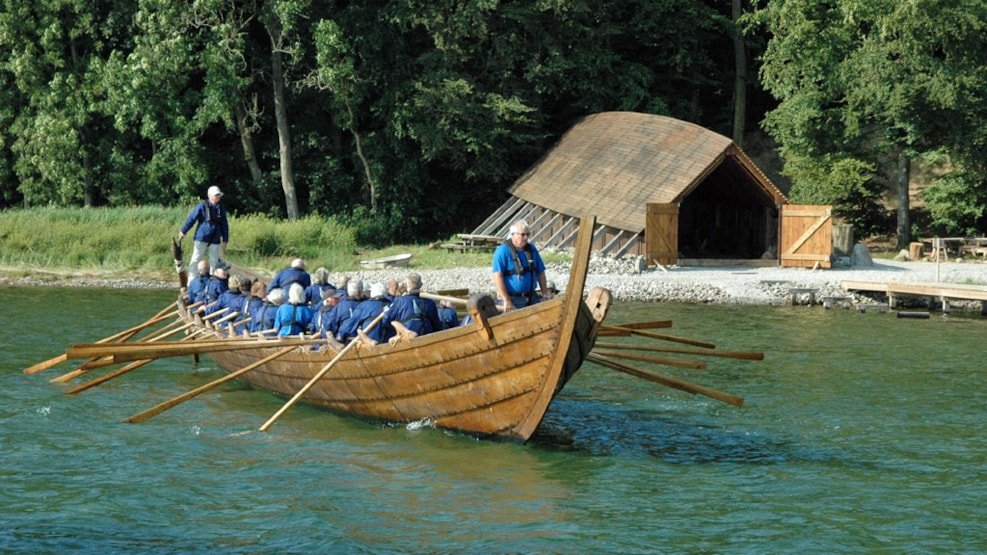 IHowever
IHowever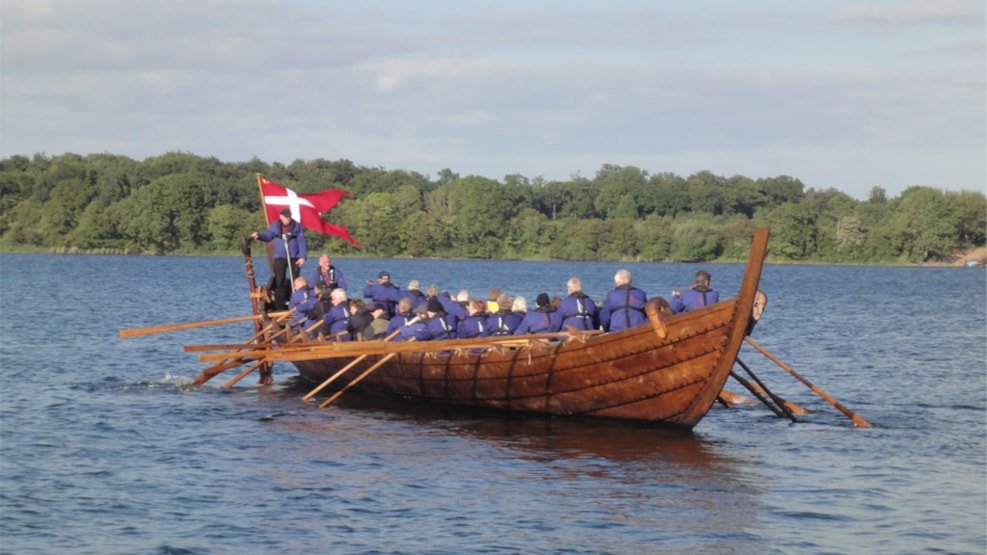
However, I have proceeded too far along a particular line namely the Akerlund plans to go back to scratch. In addition, Akerlund is the only reconstruction to show a practicable solution to the problem of hogging and twisting of the hull and hopefully I can test his concept in a model. The Nydam Tveir replica shows no evidence of a hogging solution.
The next step, having started the building board, is to carve the keel plank , stem and stern post.
At the end of the day , if I finish it, the model will be my modification of Akerlund's concept. I do not pretend it will be a "replica" of the original boat as I don't think that can be done.
Cheers
Dick
- druxey, Kenchington, Siggi52 and 4 others
-
 7
7


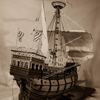

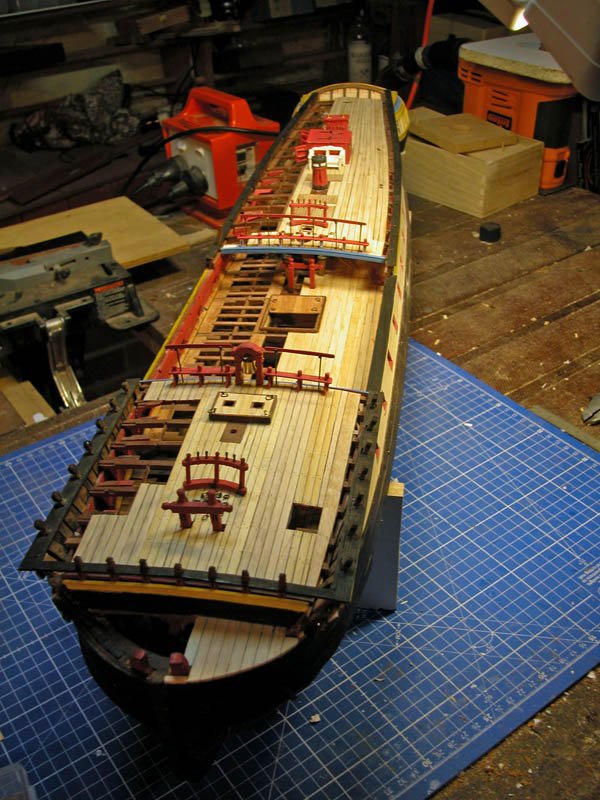
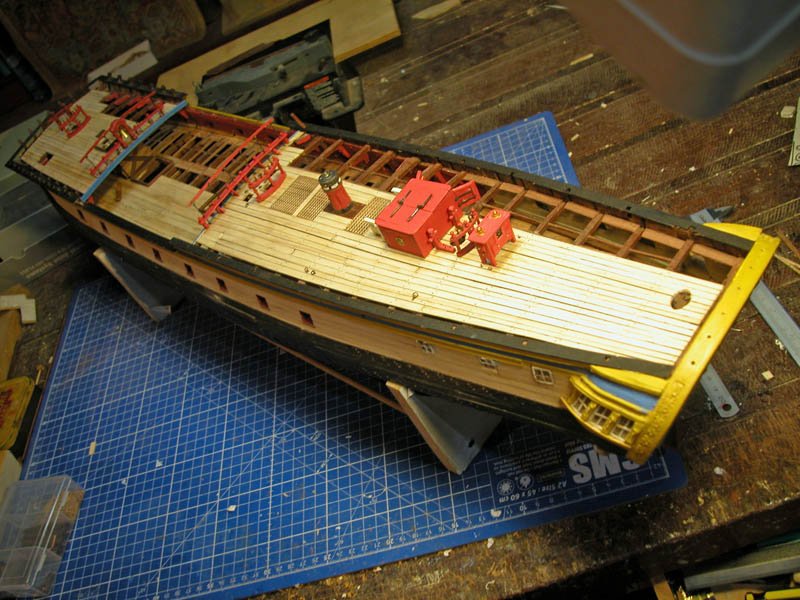
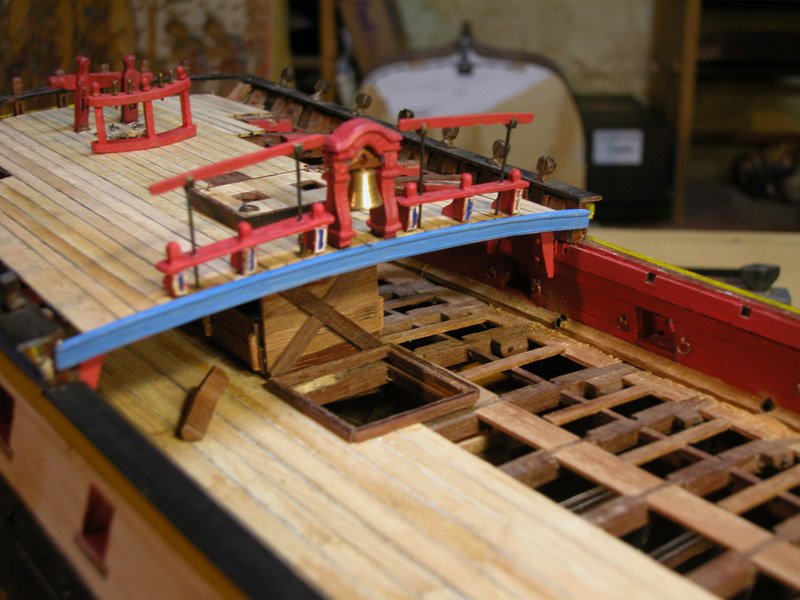
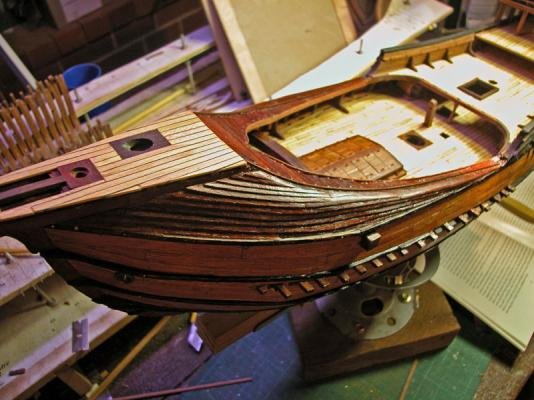
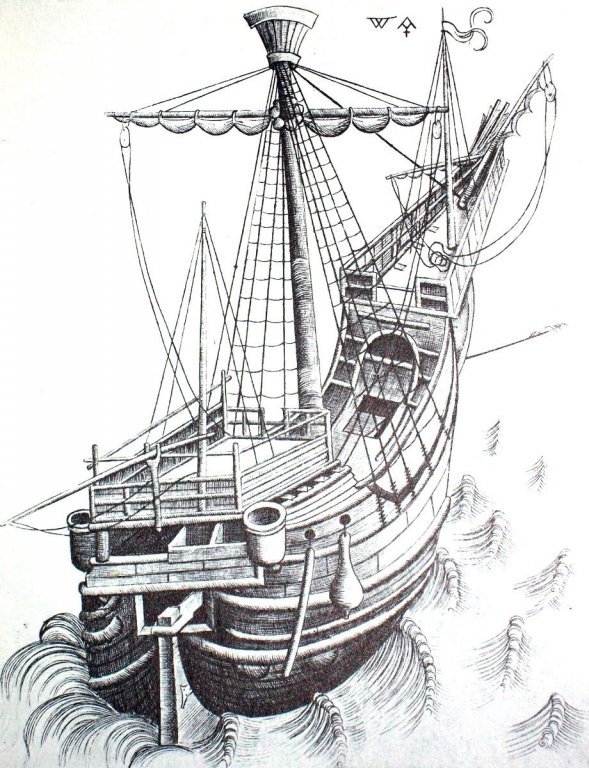

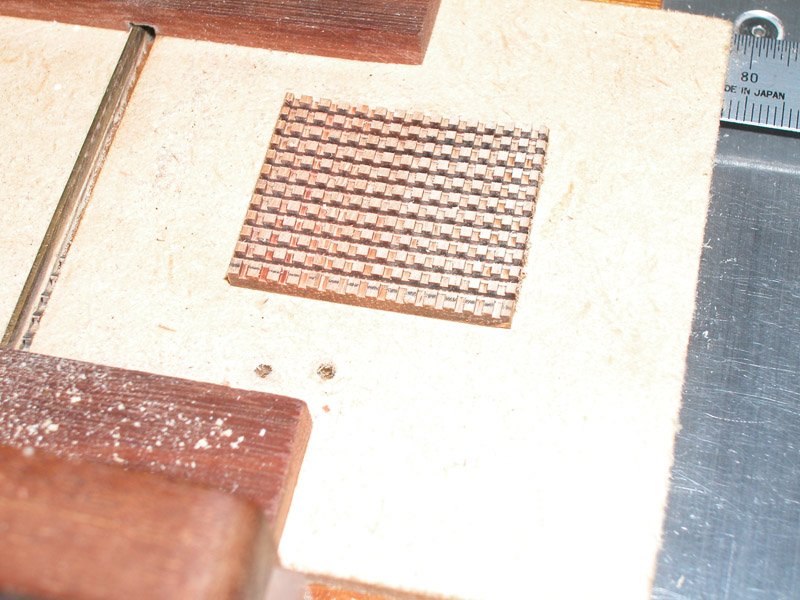
Carrack by Alvb - scale 1:250 - CARD - after Pieter Bruegel's "Landscape with the Fall of Icarus"
in - Build logs for subjects built 1501 - 1750
Posted · Edited by woodrat
In my build of the Trombetta carrack of 1445 :
On page 16 there is a description of a method to create a billowing mainsail from plaster of Paris and paper
You may find this of use
Cheers
Dick